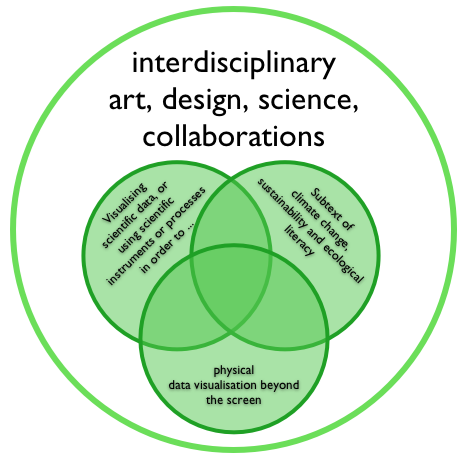ADS-VIS2011: Making visible the invisible: Art, Design and Science in Data Visualisation
|
|||
Conversational formatIf you wish to participate please send us a 'letter of intent' not longer then 300 words. It should outline why you wish to attend the event, how you think you could contribute to the conversations and which of the themes of the conference your relate to, e.g. interdisciplinarity, art, design, science, data-visualisation, ecological literacy, etc.. Give us good reasons to invite you. |
|||
Context:‘Data visualisation’ encompasses as vast range of practice. It reaches from clear and unambiguous mappings and elucidating interactive animations of data, all the way to sonifications and more experimental physical installations. |
|||
Scope:The symposium aims at bringing different disciplines together in an interdisciplinary setting, such as biologists, mathematicians, cyberneticists, physicists, environmental scientists, artists and designers that use scientific data visualisation or make use of scientific instruments or processes. |
|||
 Aims:- Formulate the key questions concerning the future challenges of data-visualisation, technology, role of collaboration, consequences for education, multi-disciplinary language and dialogue. |
|||
|
* Conversational format |
|||
| last update: 10/23/02013 22:11 About Contact Disclaimer Glossary Index |
|||
